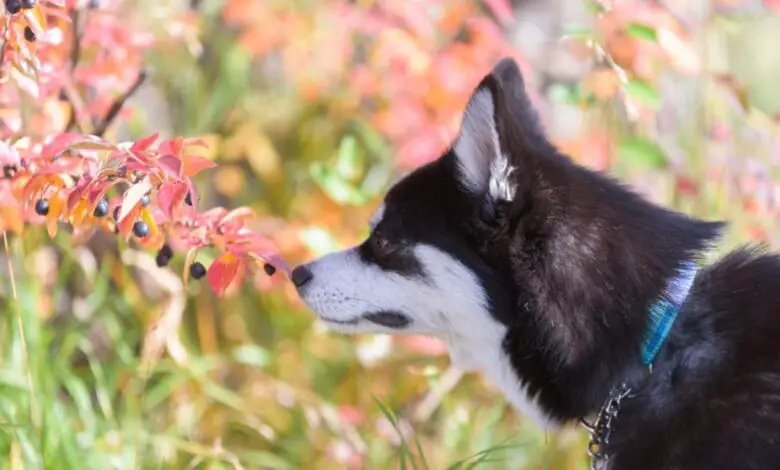
Plants are a great addition to our homes, both indoor and outdoor. They brighten our backyard or give our living spaces a touch of color and warmth. But pet parents should be very careful when choosing plants or flowers for their homes.
Many plants that humans think are nice to have may actually be dangerous to our four-legged friends. They produce dangerous compounds that can poison our pups if ingested. Many dogs are naturally curious and will chew items around them as a way to explore their environment.
Below are ten poisonous plants your canine friends should avoid. If you plan to buy another plant, make sure it’s not one from the list below. If your canine accidentally ingested one of these plants, schedule a visit to your vet right away.
1. Sago Palm
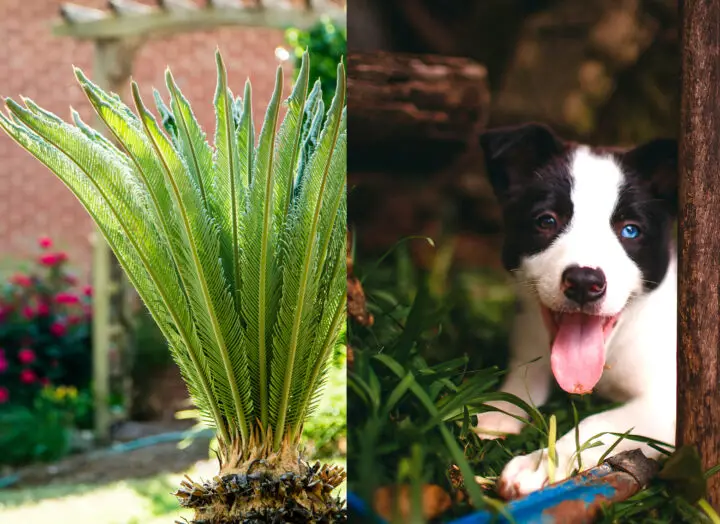
If you’re not familiar with Sago Palm, they look like a short palm tree with glossy and stiff fronds. But it is not a palm tree. They make great houseplants because it’s easy to grow indoors with minimal to moderate amount of watering.
However, this low maintenance plant contains a toxin called cycasin which can attack the dog’s liver and cause liver damage, hemorrhagic gastroenteritis, coagulopathy, or even death.
If your dog’s liver is affected, a number of symptoms may ensue. To find a list of clinical signs, check this site and learn how you can help your dog deal with these symptoms.
2. Daisy
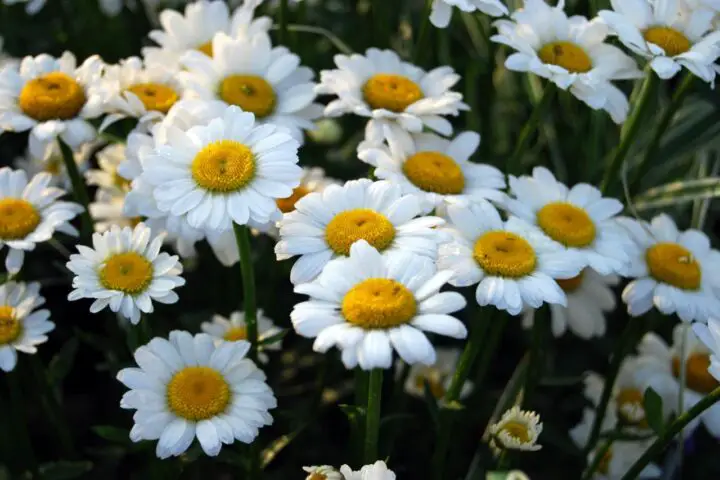
The daisy plant contains irritants such as pyrethrins, lactones, and sesquiterpene that can cause dogs to have hypersalivation, lack of coordination, and even vomit.
The sesquiterpene substance found in daisies can cause itchy or dry skin. Your canine may start scratching their skin constantly and this could lead to dermatitis. The toxic substance can also cause an upset stomach leading to diarrhea, constipation, or both.
If you have daisy plants in your house, it’s best to put them on the top shelf where your furry friends can’t reach them.
3. Aloe
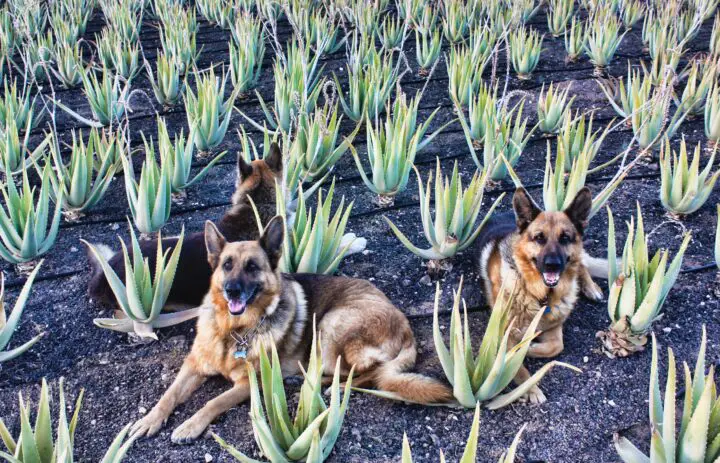
Many owners have aloe plants in their homes. It’s an interior plant that is low maintenance and gives the living room or bathroom a sense of freshness and style. While it purifies the air of benzene and formaldehyde (chemicals that can be found in your household cleaning products), they are very dangerous for your pups.
It can cause lethargy, vomiting, diarrhea, tremors, or change in your dog’s urine color. The toxicity level of this plant is mild to moderate for dogs.
4. Devil’s Ivy
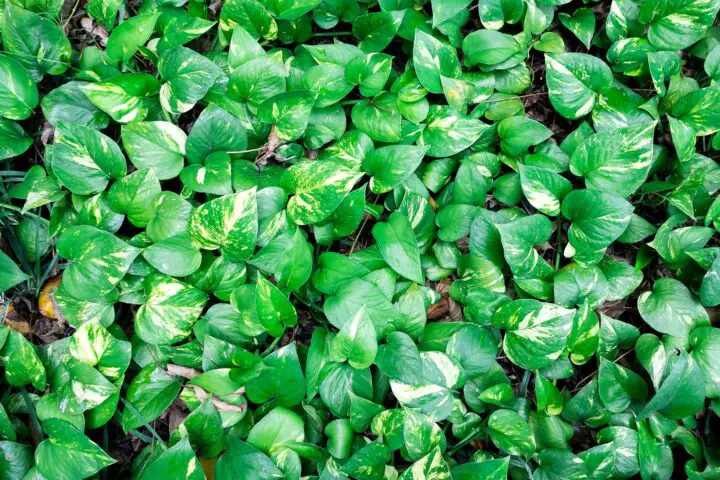
Many households grow this plant to decorate their homes. Used as a hanging plant, the Devil’s Ivy decorates the wall of many household’s living rooms and backyard. If you have them in your house, be sure that your pups can’t reach them and nibble at the leaves.
Devil’s Ivy is a poisonous plant for dogs because its leaves and stem contain insoluble calcium oxalates. If your dogs consume a large amount of calcium oxalates, it can get absorbed into their bloodstream.
When this happens, it will be deposited into the liver, heart, or kidneys and cause foaming, airway obstruction, or even a burning or irritation sensation in their mouth, lips, and tongue.
5. Peace Lily
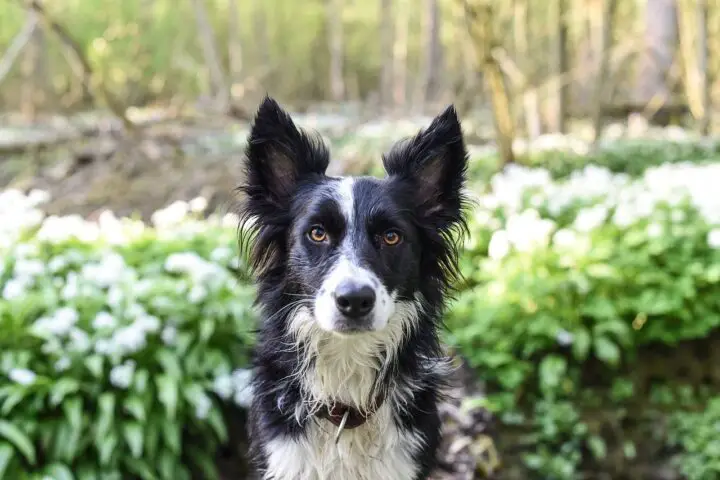
While Peace Lilies are beautiful and charming to put on your desk, it’s dangerous for dogs. Similar to Devil’s Lily, this plant contains insoluble calcium oxalates, which can cause vomiting, oral irritation, and excessive drooling.
Your dog may also experience a burning sensation in his tongue, lips, and mouth.
6. Daffodils

Daffodils are perennials that usually bloom during the early spring and come back every year. They are certainly a colorful addition to anyone’s garden, backyard, or front yard.
They are also easy to grow, but the bulbs or flowers of this plant are the most poisonous part for our furry friends. If you have a vase of daffodils, try to keep it out of your canines’ reach. If they try to drink the water from a vase filled with daffodils, that can poison them.
Lycorine and other alkaloids are some of the toxic substances found in this plant. Large consumption can cause convulsions, tremors, low blood pressure, cardiac arrhythmias, vomiting, and diarrhea.
7. Tulip Bulbs

Tulip bulbs contain toxic substances such as Tulipalin A and B that are poisonous to your doggie. This toxin is found mainly in the bulbs of the plant.
Although this colorful plant brightens up your garden, house, and front yard, it can also cause your dog to drool, vomit, and have diarrhea. Keep this plant away from your four-legged friends because the bulb is the most dangerous part.
Generally, all parts of this plant contain toxins that can be deadly for your canine.
8. Apple (Includes crabapples)
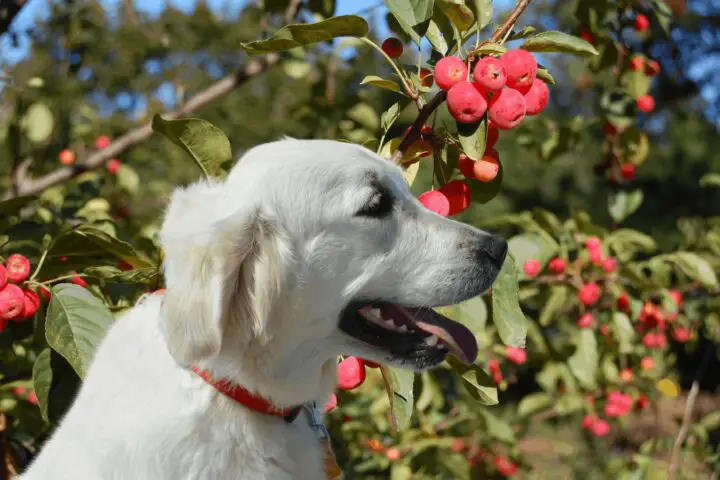
If you plan to go apple picking, try not to bring your pup with you. For those that grow apples in their backyard, make sure that area is fenced to keep your dog away.
The apple plant or crabapple plant includes a toxic substance for dogs called cyanogenic glycosides that are found in the leaves, stems, and seeds. If your furry friends accidentally ingest any part of the apple plant, the toxic chemical will be metabolized into cyanide.
Within minutes of eating any part of this plant, your canine companion may have difficulty breathing and start to pant heavily. They may also have dilated pupils or even go into shock.
9. Oleander
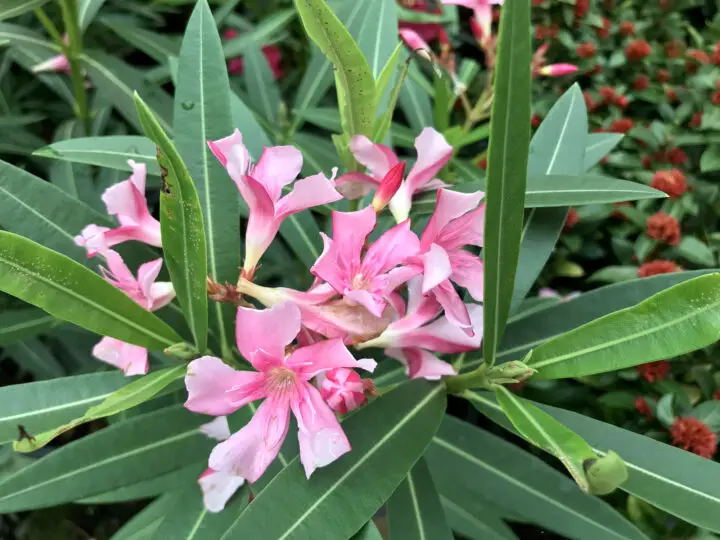
While Oleander plants are pretty garden plants, they contain toxic chemicals called cardiac glycosides that are deadly to your pups.
If ingested by accident, your furry friend may experience blood pressure changes, dehydration, shock, vomiting, diarrhea, tremors, and seizures.
If you have Oleander plants in your garden or backyard, it’s best to grow them in a corner where your curious pups can’t get to it. Create a fence high enough so your canine friends stay away from it.
10. Lavender
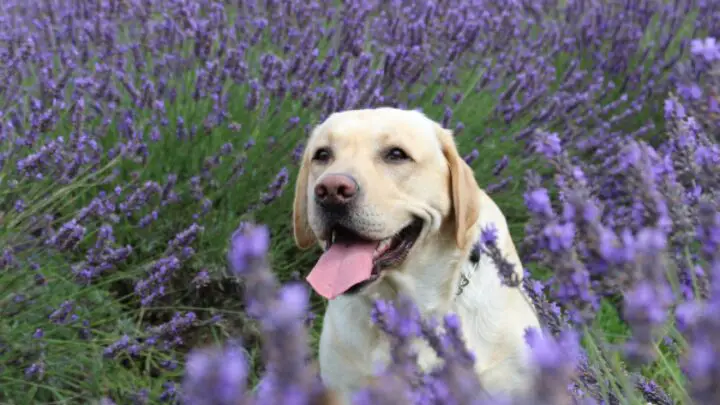
Having lavender plants indoors can serve many benefits to human owners including creating a calming effect, improving sleep, or reducing blood pressure and heart rate. But this plant is toxic to dogs.
It contains a deadly chemical of linlool and linalyl acetate that can cause your canine to vomit, have nausea, or lose appetite.
